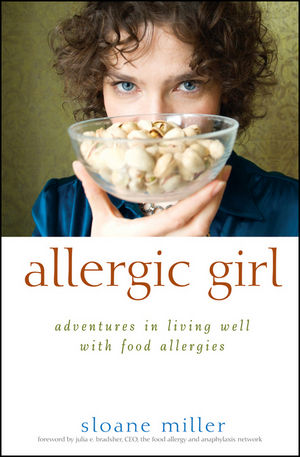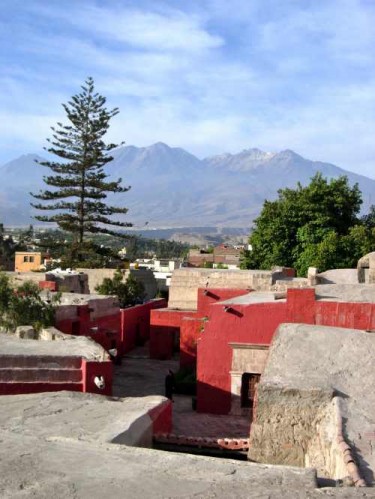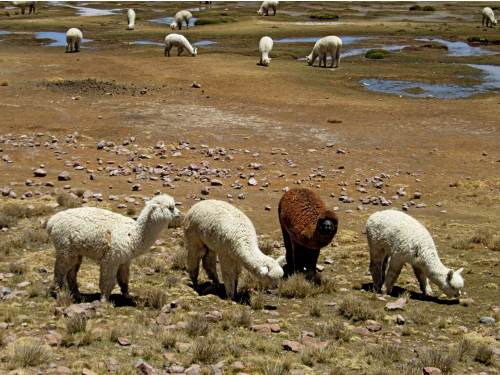Before I was diagnosed with Celiac Disease in 2004, one of the symptoms that plagued me was an eczema-like rash that flared up on a regular basis. It was most common on my arms, legs, face, and neck, but it could show up anywhere, anytime. Doctors prescribed skin creams, but nothing took it away until I eliminated gluten from my diet.
I had a blissful respite for about a decade. Then, a couple of years ago, the rashes started coming back.
At first, I assumed I’d been accidentally glutened at a restaurant. But on those rare occasions when I have accidentally ingested gluten, the first symptom that popped up was ulcers inside my mouth, and that didn’t happen. Still, clearly I was ingesting something that was making me sick, and I took a closer look at my diet. Everything I ate was gluten-free, as far as I knew, but that didn’t guarantee safety. (Some readers will remember the Wellshire Farms debacle in 2008; in that case, the company sold products labelled “Gluten Free” that weren’t. It was horrible, particularly because several of these products, like the Wellshire Kids’ Dinosaur Shapes Chicken Bites, were marketed for children. To this day, I refuse to buy anything made by Wellshire Farms.)
I started playing detective, trying to identify the culprit. When I found the cause, it was entirely by accident: I tried an eye-makeup remover made by Rimmel, and my eyelids cracked open. The good news was that my reaction, and the rashes, had nothing to do with gluten. The bad news was, I’d developed a contact allergy to methylisothiazolinone, a chemical widely used in toiletries, household cleansers, and other sundry goods.
Methylisothiazolinone is used as a preservative and a biocide. It has the dubious distinction of being named the American Contact Dermatitis Society Contact Allergen of the Year for 2013. Here’s how another source describes methylisothiazolinone:
It is a cytotoxin that may affect different types of cells. Its use for a wide range of personal products for humans, such as cosmetics, lotions, moisturizers, sanitary wipes, shampoos, and sunscreens, more than doubled during the first decade of the twenty-first century and is proving to be a concern because of sensitization and allergic reactions as well as cell and nerve damage.
Search online for methylisothiazolinone — or its close relative methylchloroisothiazolinone — and you’ll find a lot of anecdotal accounts of its frightening effects. You’ll also find an increasing number of medical journals sounding the alarm, especially in Europe. In the US, the National Institutes of Health’s Library of Medicine has abstracts of these articles. Check out “Methylisothiazolinone Outbreak in the European Union” to see how ongoing exposure to the chemical is moving beyond eczema-like rashes and causing lichen planus-like or lymphomatoid reactions. Don’t be put off by the snoozy title of “Methylisothiazolinone in Selected Consumer Products in Belgium,” which shows that many companies are far exceeding the legally allowed concentrations of methylisothiazolinone in consumer products.
So, why talk about methylisothiazolinone on a blog devoted to living gluten-free? A couple of months ago, I got a message from a reader who was suffering from rashes, and she wanted to know if I had any advice. I told her about my experience with methylisothiazolinone and suggested that she stop using any product that contained it. This is no small thing to do: I found the chemical in Pantene shampoo and conditioner, Crabtree & Evelyn bath gel, Murad facial toner, and a host of other products running the gamut from inexpensive drugstore staples to expensive boutique brands. Methylisothiazolinone is everywhere. I just heard back from this reader, who told me that, by avoiding the chemical, her rashes had cleared up. That was when I decided I had to write this.
Get ready to hear more about methylisothiazolinone over the next few months. It’s already part of the basis for a class-action lawsuit against The Honest Company; details begin on page 16 of the filed complaint. (The Honest Company has previously responded to the Environmental Working Group’s criticism of its use of methylisothiazolinone on its blog.) The European Commission is currently reviewing a proposal to restrict the use of methylisothiazolinone, and to ban the chemical in any “leave-on” product, including wet wipes; the public consultation period is open until October 23, 2015. (Want to participate? Click here.) The UK’s BBC One Watchdog has covered methylisothiazolinone allergies — read this and this — and caused Johnson & Johnson to reformulate one problem product. (Vaseline, Brylcreem, Huggies, and Nivea also announced plans to reformulate… at least in the UK.) The New York Times has written about it. There’s a very helpful Facebook group, “Allergy to Isothiazolinone, Methylisothiazolinone and Benzisothiazolinone,” that has constantly updated information, but brace yourself for some frightening photos of victim’s reactions if you visit. In the meantime, you might want to check out your own medicine cabinet.








